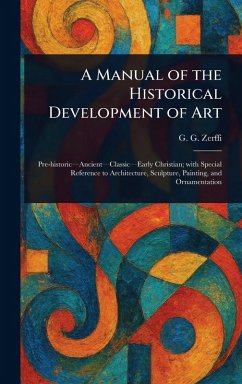Explore the evolution of artistic expression with "A Manual of the Historical Development of Art," a comprehensive journey through art history from pre-historic times to the early Christian era. Authored by Gustavus George Zerffi, this meticulously prepared volume delves into the rich tapestry of ancient and classic art, offering insights into architecture, sculpture, painting, and ornamentation. This historical study examines key periods and movements, tracing the development of artistic styles and techniques. With a special emphasis on architecture, sculpture, and painting, the book also explores the intricate details of ornamentation across diverse cultures. Whether you are a student of art history, an enthusiast of architectural marvels, or simply captivated by the beauty of artistic creation, this manual provides a valuable overview of art's historical trajectory and enduring legacy. A timeless resource for understanding the foundations of artistic expression. This work has been selected by scholars as being culturally important, and is part of the knowledge base of civilization as we know it. This work is in the public domain in the United States of America, and possibly other nations. Within the United States, you may freely copy and distribute this work, as no entity (individual or corporate) has a copyright on the body of the work. Scholars believe, and we concur, that this work is important enough to be preserved, reproduced, and made generally available to the public. We appreciate your support of the preservation process, and thank you for being an important part of keeping this knowledge alive and relevant.
Bitte wählen Sie Ihr Anliegen aus.
Rechnungen
Retourenschein anfordern
Bestellstatus
Storno









